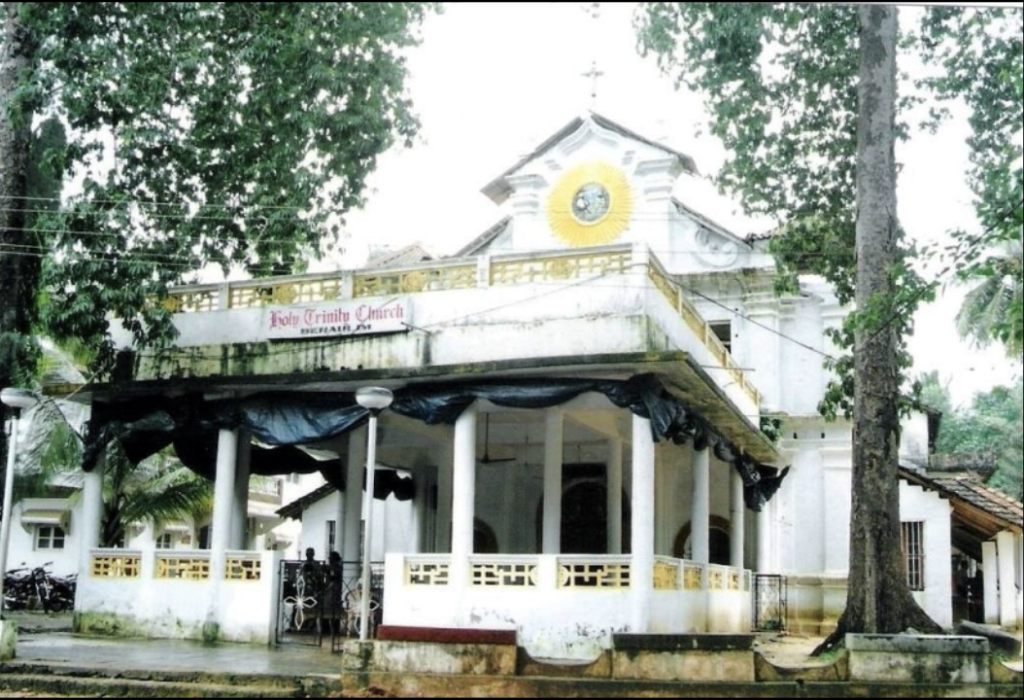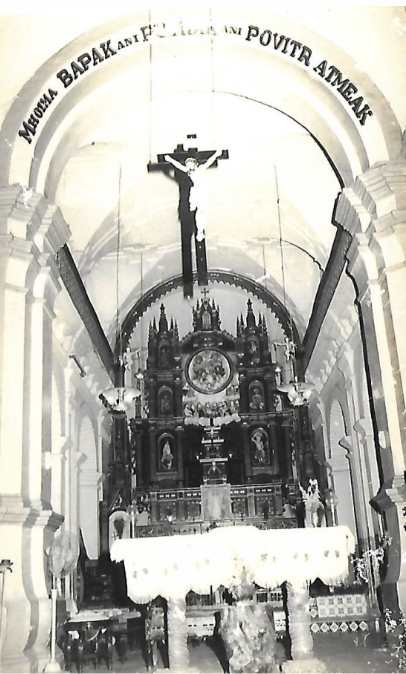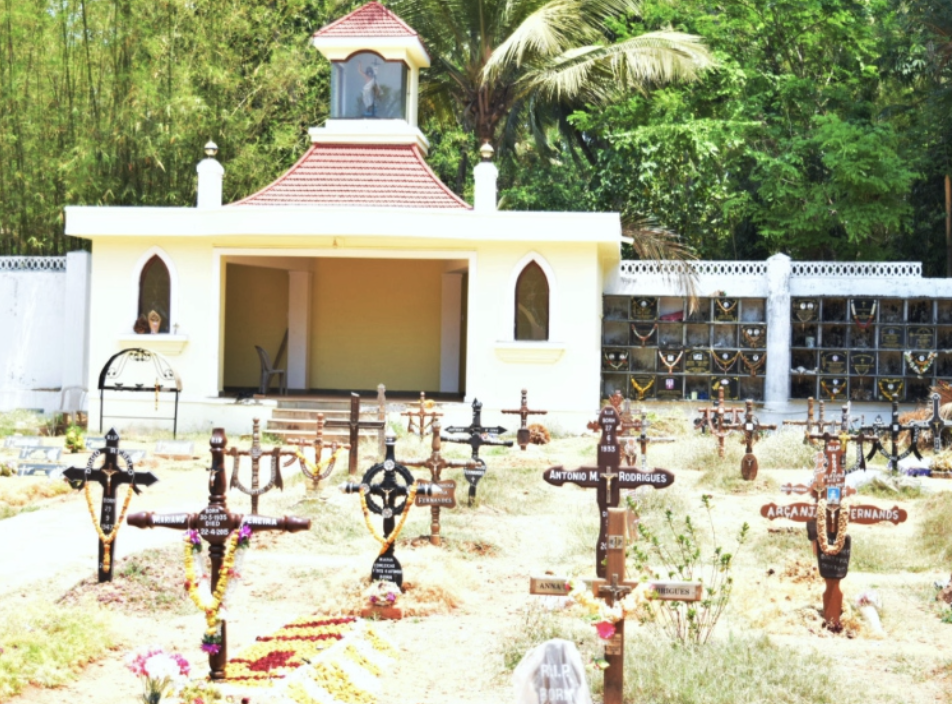About the church
March 19, 1992, on the feast day of St. Joseph, was born a new parish in Benaulim, in the archdiocese of Goa and Daman. The chapel of that time was raised to the status of a full- fledged parish Church by a Decree dated March 3, 1992. At that time there were 152 parishes in the archdiocese and this new parish was the 153rd.
It was established by late Msgr. Raul Nicolau Gonsalves, the Archbishop-Patriarch of Goa and Daman in the presence of Fr. Neves Fernandes, the Parish Priest of St. John the Baptist Church, Benaulim and Fr. Victor Rodrigues, then chaplain of the Holy Trinity Chapel.
The first whispers regarding the upgradation of the ‘Capela da Ssma. Trindade’ into a Church were overheard during the tenure of the first ever resident chaplain, Fr. Arsenio Lucio Fernandes from Colva in around 1926.


The Old Structure
The old structure of the Holy Trinity Church consisted of an apse, with the main altar, a sanctuary, a transept and a nave with two lateral corridors; a sacristy, porch and a parochial residence.
The Holy Trinity Church was at first a chapel before getting the status of the church. It is located in the ward, Mazilvaddo. It was known as St. Anne’s Chapel in honour of the mother of our Mother Mary.
It is good to note that it was built with the financial support of the Commuidade of Benaulim, 3.5 km. away from the mother church, St. John the Baptist.

It took almost 40 years for the people belonging to the then chapel of Holy Trinity to make their dream come true, i.e. to see their chapel as a church. Dr. Caetano De Loiola Pereira notes in his inaugural speech at the erection of the church that when the last Portuguese Archbishop-Patriarch Dom Jose Vieira de Alvernaz had come for a pastoral visit to the chapel in 1952, then chaplain, Fr. Saturnino Antao from Chandor who had been transferred to Benaulim from the mission land of Diu, had placed before the archbishop the wish of the people, that the chapel might be given the status of a church.
The parishioners gave full support to the ad hoc nominees successively put in charge of this chapel by the Archbishop, like Fr. Camilo Xavier, Fr. Jose Dias, Fr. Zeferino D’Souza, Fr. Guilherme Pegado, Fr. Cristino Fernandes and Fr. Macedonio da Costa. God had a plan to upgrade this chapel into a church through the hands of the first Goan Archbishop- Patriarch Raul Nicolau Gonsalves during the tenure of Fr. Victor Conceicao Rodrigues.
The New Church
The structure is built with Trinitarian concepts. The church is triangular in shape denoting the Holy Trinity i.e. the Father, the Son and the Holy Spirit. On the right hand side is the chapel of our Lady of Livramento. The altar is kept as it is. On the left hand side near the priests’ residence attached to the church is the chapel of Blessed Sacrament with its own altar. People use it as a prayer room. The church also has a staircase with a seating area above and it also has a basement which is used as conference hall.
The old altar of the old church is also kept safely and is used in the new church. The down part with the tabernacle is preserved in the sacristy, while the top part is used
in the Chapel of the Blessed Sacrament.
The church has the capacity to accommodate 1,200 people. The two bell towers beautify the structure of the church and gives it a look of a modern church.


THE CEMETERY
The people of this chapel did not have a cemetery. The near and dear ones of the families belonging to this chapel had to be buried in the cemetery of St. John the Baptist Church.
The long standing need of the parish was fulfilled, thanks to the unstinted efforts of dynamic Fr. Jose Dias- a priest of singular virtues and indomitable spirit. On May 18, 1980, the cemetery was inaugurated by the Archbishop-Patriarch.
The first burial took place on the same day and it was a young fisherman, Roque da Silva from Comlatollem, whose funeral rites were performed by Fr. Jose Dias.
